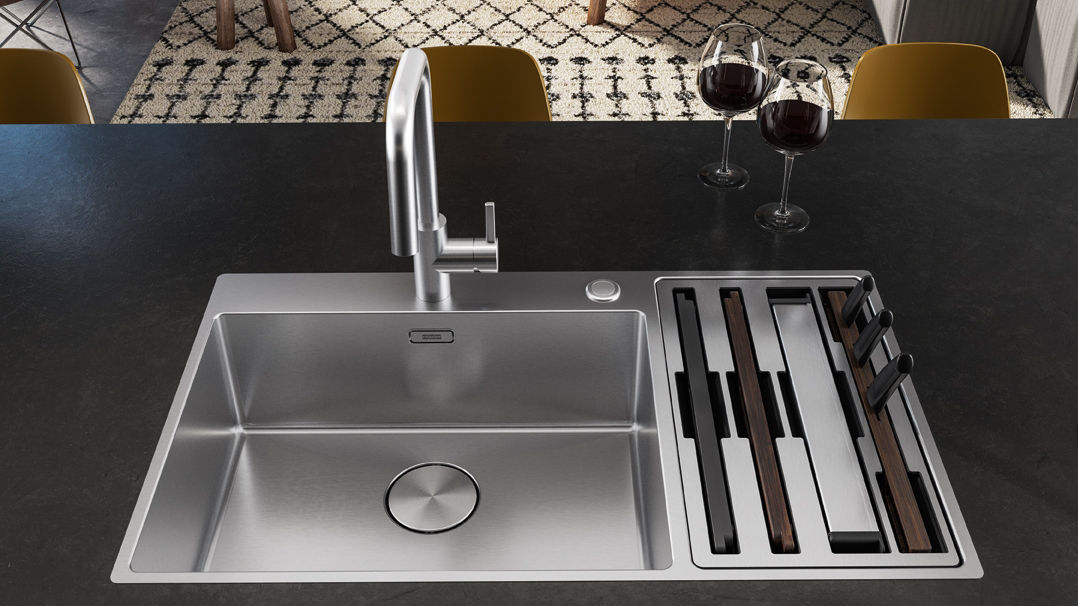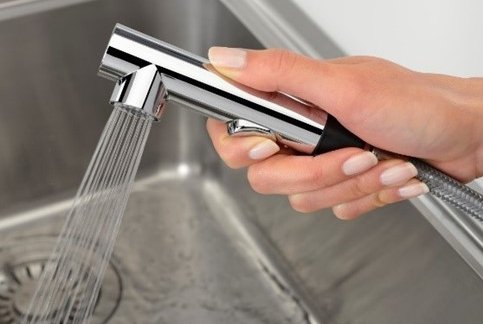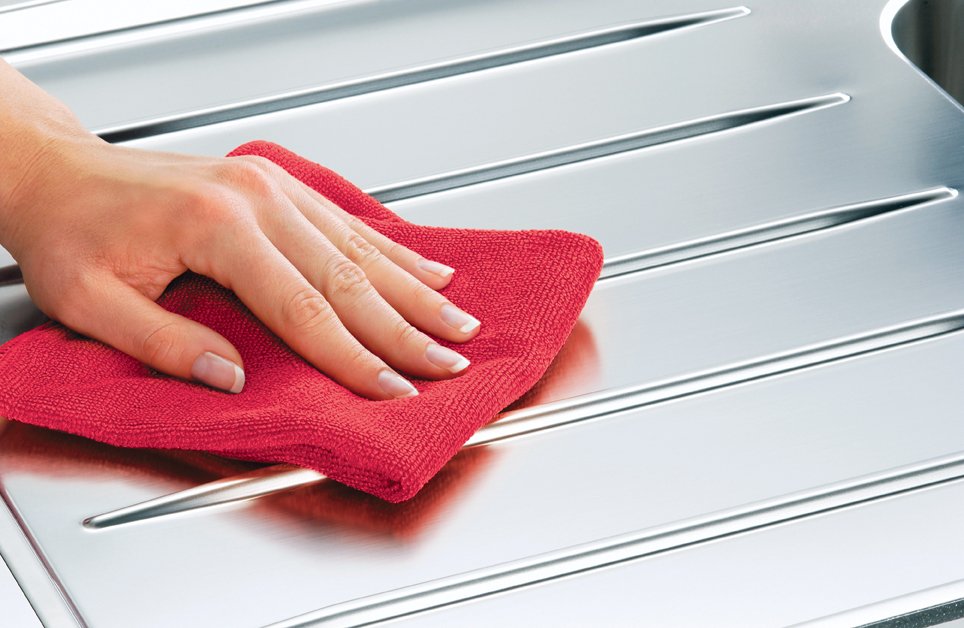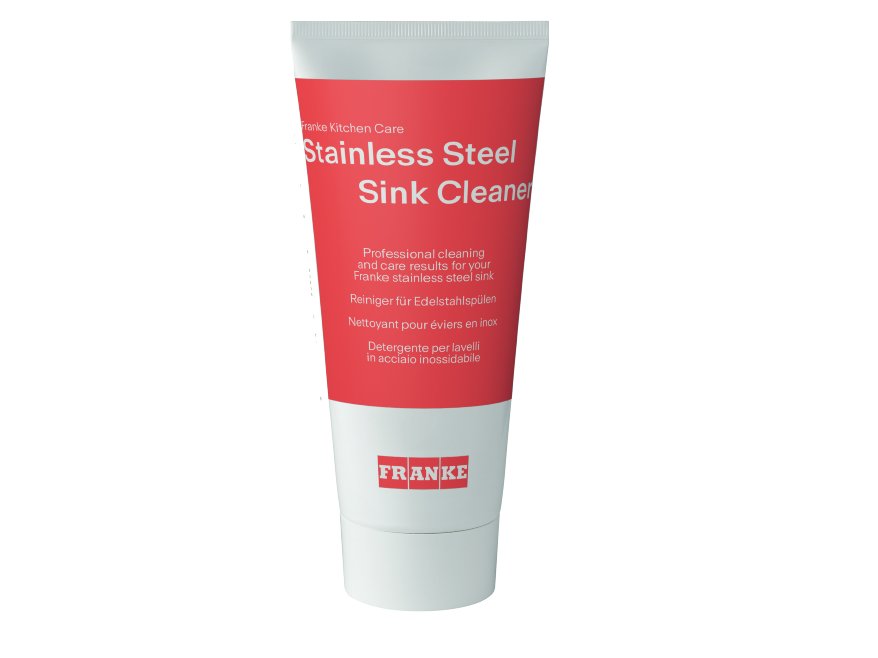Keep your stainless steel sink in tip-top condition and looking like new with our handy guide to daily and weekly cleaning.
How we use our homes has changed over the last few years and, with the rise of open-plan living, our kitchens are now places to live, cook, eat and socialise. Today’s sinks do a lot more than the washing up, they often include accessories that will help you with daily food preparation tasks such as our Box Center sink pictured above.
Your sink space is an integral part of your kitchen design – working hard and being on show every day of the year so you want it to look its best with minimum effort.
The advantages of a stainless steel sink
Stainless steel has long been the material of choice in professional kitchens, but stainless steel sinks are also found in 70% of homes around the world. Strong, durable and hygienic, the material is resistant to tarnishing and rust, making a stainless steel sink a stylish and functional choice in the heart of the home. It also embodies an industrial chic design look that will stand the test of time, while also being an excellent choice for sustainability being both long-lasting and recyclable.
The added good news is that keeping your stainless steel sink clean and looking as good as new isn’t a chore – just a few simple daily and weekly steps will keep it spick and span.
The daily wash down and the weekly polish
Once a week, it’s worth spending a little more time giving your stainless steel sink a polish to ensure it looks its shiny best for longer. For optimum results, we recommend you use a cream cleaner such as our Stainless Steel Sink Cleaner, which is an acid-free paste containing polishing compounds for effective and gentle cleaning. Other products like Cif and Shiny Sinks will also get the job done.
How to remove tough stains from a Stainless Steel sink

As part of your weekly routine, put some cleaner onto an old toothbrush and scrub those hard-to-reach areas, such as the rims of the waste strainer and around the plug hole. It’s a good opportunity to clean the tap at the same time.
Lift the cover off the waste overflow and brush anywhere you feel needs a little extra TLC. If you have an undermount sink, brush lightly where the sink meets the worksurface as that’s where it’s sealed together with silicone.
Simple steps for added shine
Now your stainless-steel sink is looking as good as new, be sure to keep up the good work and remember not to use wire wool pads, scourers, bleach or other abrasive chemicals on the surface. And finally, salt, vinegar, citrus fruit juices, mustard or pickles can also cause corrosion, so be sure to quickly wipe up any spills.
Happy cleaning! 😊





